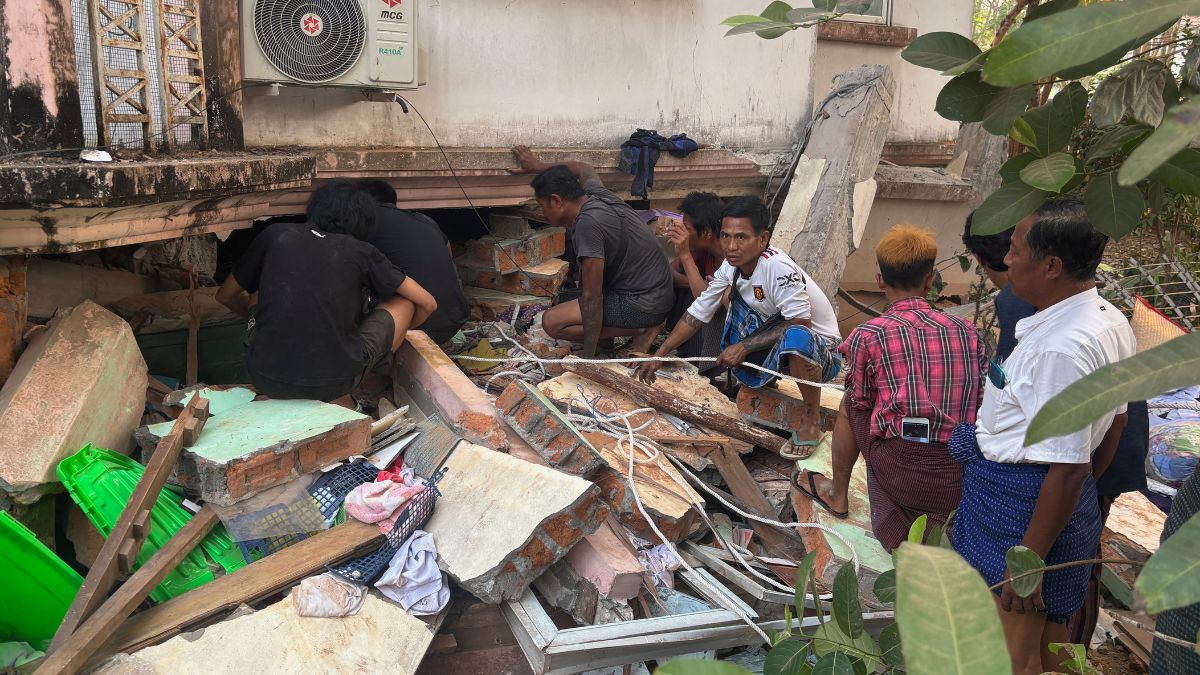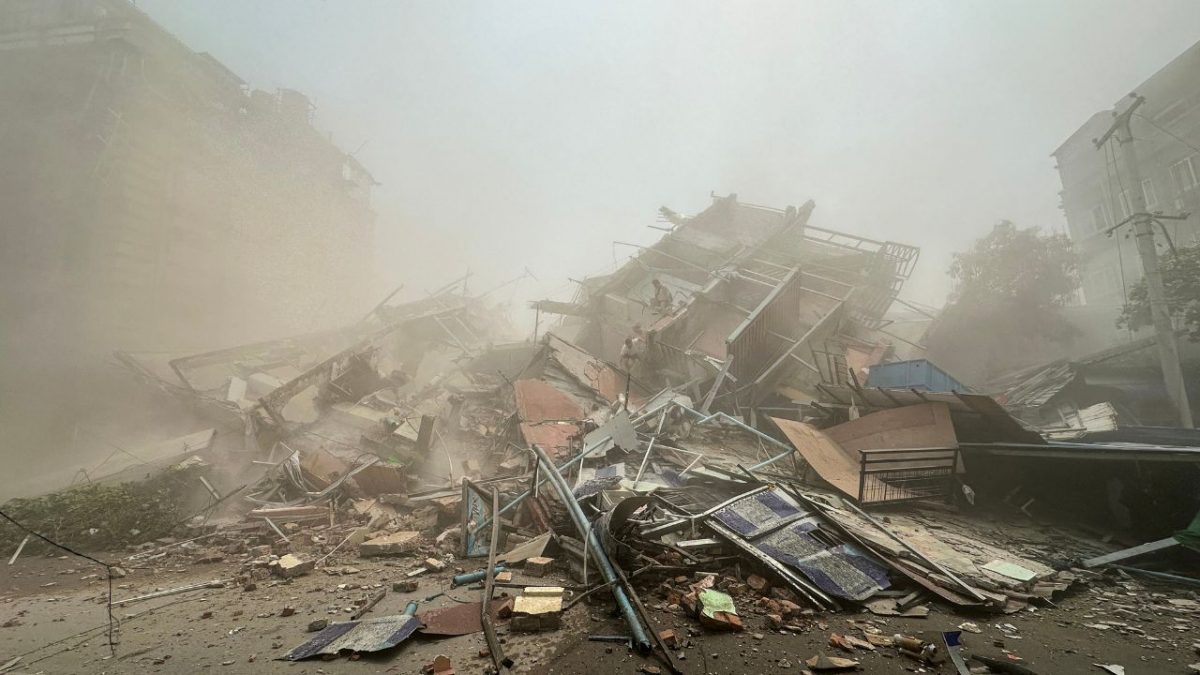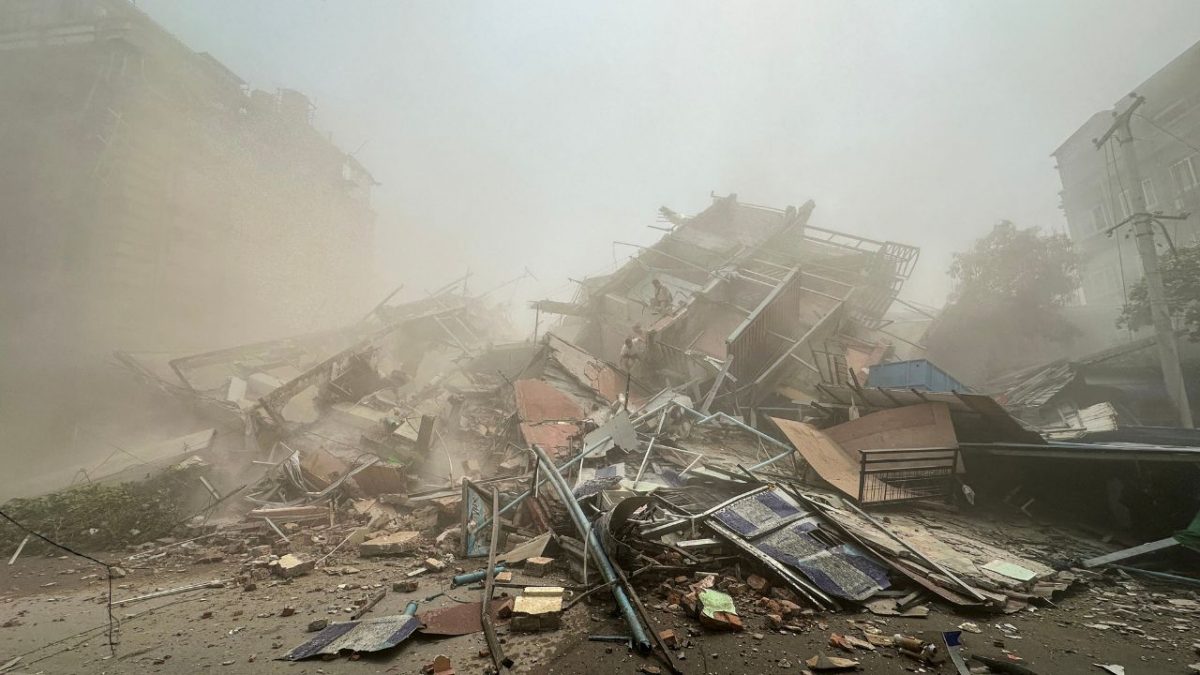Hundreds of people died after Myanmar was jolted by a powerful earthquake on Friday (March 28). While the scale of devastation is unclear yet, the 7.7 magnitude quake came at a time when the Asian country is reeling from a civil war and a dire humanitarian situation.
Strong tremors were also felt in neighbouring Thailand, where at least three people died in the capital Bangkok and dozens were buried when a high-rise building under construction collapsed. Injuries were also reported in the Chinese city of Ruili on the border with Myanmar.
The epicentre of the quake that also occurred along the Sagaing Fault was near Mandalay in Myanmar. The Asian country, which has been embroiled in a civil war for the past four years, is not equipped to tackle natural disasters.
Here’s why.
Myanmar’s history of unrest
Myanmar has witnessed decades of conflict and military rule since its independence from the British in 1948.
This changed in 2011 and four years later, the country held free elections and elected Aung San Suu Kyi to power.
Myanmar was again thrown into a state of unrest after Suu Kyi and her government were ousted in a military coup led by General Min Aung Hlaing in February 2021. He jailed her and other members of her government alleging widespread fraud in the November 2020 elections.
The military violently curbed the protests against the coup, with rights groups estimating hundreds of casualties and thousands of injuries in the crackdown.
The violent clampdown on largely peaceful protests triggered a widespread insurgency by ethnic rebel groups and pro-democracy resistance groups.
Myanmar is now involved in an all-out, bloody civil war.
Why Myanmar can’t handle natural disasters
Myanmar has been gripped by civil war, military rule and widespread poverty for most of the past seven decades.
The country’s four-year-long civil war since 2021 has further exacerbated its troubles. In these years, the ruling military has lost control of large parts of Myanmar and suffered huge losses in the violent fighting with ethnic armies and armed resistance groups.
More than 3 million (30 lakh) people have been displaced by the conflict and 20 million (2 crore) are in need, according to the United Nations.
Many places in Myanmar are now too dangerous for aid groups to reach. People struggle for basic needs, including medical care and food.
Hunger has touched disturbing levels as inflation made food unaffordable for many, as per BBC. Food insecurity has reached “unprecedented levels”, says the UN’s World Food Programme.
A report by the United Nations Development Programme (UNDP) released last year disclosed that poverty rates in the Asian country have almost doubled from 24.8 per cent in 2017 to 49.7 per cent in 2023.
“The new data show that less than 25 per cent of the population in Myanmar manage to secure steady incomes to live above the poverty line. Without immediate interventions to provide cash transfers, food security and access to basic services, vulnerability will keep growing, and impacts will be felt across generations” said UNDP Administrator Achim Steiner.
Friday’s quake has worsened Myanmar’s woes.
ALSO READ: Myanmar, Thailand struck by deadly earthquake: Why this temblor was ‘not unexpected’
“This earthquake could not come at a worse time for Myanmar. More than three million people remain internally displaced from armed conflict that has raged since the 2021 military coup,” Joe Freeman, Amnesty International’s Myanmar researcher, said in a statement.
“Central Myanmar, which is believed to be the epicentre of the earthquake, has been ravaged by military air strikes and clashes between resistance groups and the military,” he added.
The human rights organisation called on Myanmar’s ruling military to allow humanitarian aid for all areas wrecked by the strong earthquake. “Myanmar’s military has a longstanding practice of denying aid to areas where groups who resist it are active. It must immediately allow unimpeded access to all humanitarian organisations and remove administrative barriers delaying needs assessments,” Amnesty International’s Myanmar researcher said.
Speaking to BBC, Freeman said, “There are so many issues already impacting civilians there - military airstrikes, clashes between resistance groups and the military and different towns under different control,”, adding those as well as the quake, are “going to make delivery of aid all the more complicated”.
Myanmar’s junta has declared a state of emergency in six regions and states including the capital Naypyitaw and Mandalay. It has also made a rare request for international aid.
“We want the international community to give humanitarian aid as soon as possible,” a spokesman for the junta, Zaw Min Tun, told AFP at a hospital in Naypyidaw.
Earthquake rocks Myanmar
The powerful quake that struck war-torn Myanmar has killed over 180 people and injured more than 700 others, as per BNO News. The head of the country’s military government has confirmed 144 casualties and more than 730 wounded.
“Several injured people” are in central Sagaing and Mandalay near the epicentre, along with the capital Naypyitaw, Myanmar state media said. It asked blood donors to contact hospitals.
The city of Sagaing is a major rebel stronghold, which just a few months ago was the site of intense clashes between rebels and the military, reported BBC.
Hari Kumar, a civil engineer and regional coordinator for the NGO GeoHazards International in South Asia, told CNN that four friends told him the Mandalay General Hospital in Myanmar is at full capacity and no longer admitting patients. “Which is absolutely sad because that’s the only hospital (in the area) available to the public. There are obviously many, many people coming in with injuries,” he said.
Kumar also said that Mandalay hospital is out of power and water. “Their capacity to be able to treat patients would be limited now, which is really sad,” he added.
The Red Cross said electricity and internet were down in several parts of Myanmar after the quake. In a social media post, the organisation said major damage has been reported in Mandalay, Sagaing, Naypyitaw, Bago and Southern Shan.
“This disaster will have left people devastated and in need of drinking water, food and shelter," Julie Mehigan, head of Asia, Middle East & Europe for Christian Aid, told Associated Press. “Myanmar is one of the least developed countries in the world. Even before this heartbreaking earthquake, we know conflict and displacement has left countless people in real need.”
Earlier this week, the UN said it would cut aid for one million (10 lakh) people in Myanmar from next month due to global funding shortages.
With the war-torn country cut off from the rest of the world, it could take time for aid workers to get in.
With inputs from agencies


)
)
)
)
)
)
)
)
)



